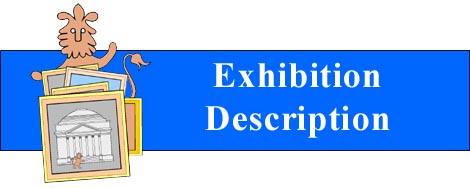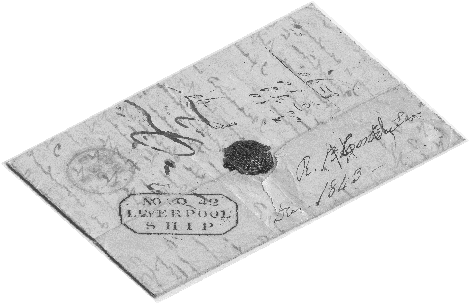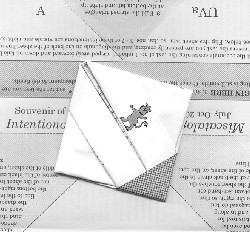
Intentional
Miscataloging: A Rare Book School Exhibition
The Dome Room of the Rotunda 16 July - 28 October 2001 Rare Book School owns about 25,000 books, manuscripts, and prints dating from the c15 to the present. The physical arrangement of the collections is unusual: the cloth-bound books on the upper shelves of the Dome Room of the UVa Rotunda, for example, are arranged in chronological order, to show the development of cloth bookbinding styles: Sue Allen's RBS course, Publishers' Bindings, 1830-1910 (B-090), makes good use of these books. Similarly, many of our prints are filed by technique (rather than by artist or engraver), to facilitate the identification of illustration processes. Other RBS collection arrangements assist the study of various formats, genres, materials, and physical features such as printing processes, sewing structures, end-papers, and dust-jackets. The present exhibition showcases some of Rare Book School's paper ephemera collections and explains some of the ways in which this material is used in various RBS courses. Ephemera may be defined as materials (generally fairly slight in nature) intended for a specific use or purpose and then usually discarded. Not all of the material in this exhibition is ephemeral: some of the manuscripts, in particular, have some permanent value. On the other hand, one generation's ephemera can be a later generation's treasure; there aren't many items in this show that would have been greatly valued by their creators. The exhibition is an informal one; the various cases can be viewed in
any order. Case 1L (to the right of the staircase) shows various ways of
Cases 5L and 5R meditate on the history of the letterhead, and Case 6L shows some of the successes and failures of autograph hounds. Various examples of legal documents are shown in Case 6R. Case 7R presents a sampling of White House ephemera, and Case 8L shows political material. Case 8R shows a miscellany of printed broadsides; Case 9R deals with handwriting old and new -- and with those who could not write their own names. Military ephemera can be found in Case 10L, and newspapers and such in Case 10R. Finally, see Case 11L for telegrams and Cases 11L and 12R (to the left of the staircase) for various sorts of postal printing (do you know what a carte pneumatique is?) and for some Autopen signatures. For more information about Rare Book School and its programs, consult our Web site, or stop by 114 Alderman Library to pick up a current course bulletin (like the ones shown open in the exhibition cases in this room) and other information about RBS's activities. This exhibition is dedicated to Kenneth W. Rendell, the generous donor to Rare Book School of much of the material on display (see Case 4R). 
|
